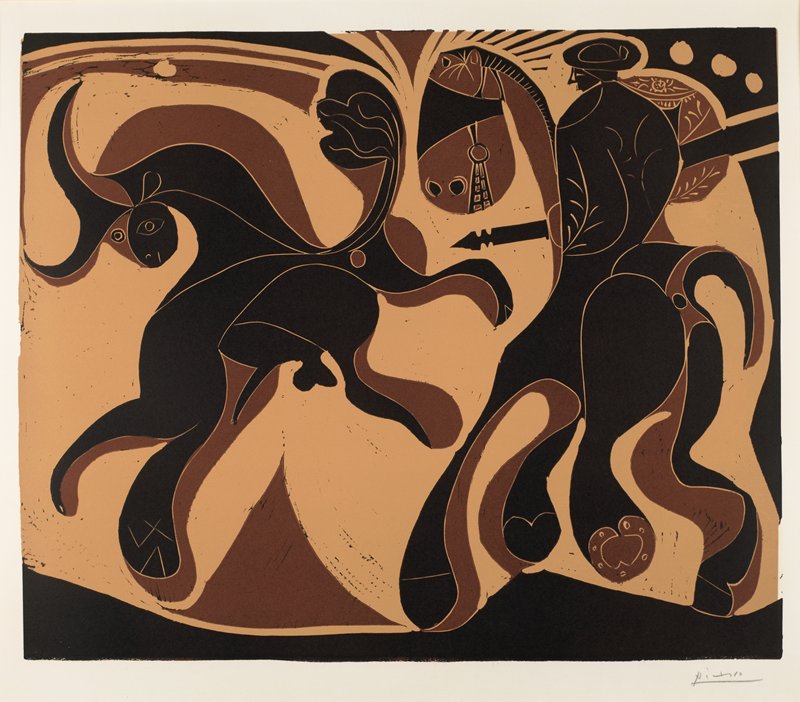
Why the Print and Drawing Fair Is Still a Draw
September 26, 2018—The first official Minneapolis Print & Drawing Fair was held at Mia in 1993, when Bill Clinton was president, the Internet was largely limited to college campuses, and, more to the point, there were no Twin Cities galleries dedicated to selling art prints. Much has changed—except for the last point. The only place in Minnesota to find such a vast range of quality prints and drawings for sale is the fair.

Mia’s color linocut of Pablo Picasso’s “Après la Pique,” brought to the 2001 fair by R.S. Johnson Fine Art.
The 25th annual fair was held October 5 to 7, 2018, in the museum’s Reception Hall and Macmillan Atrium. It featured a notably diverse selection of prints and drawings, including work from Paulson Fontaine Press, of Berkeley, California, which represents Kerry James Marshall and other contemporary African-American artists who, in the words of the gallery’s director, “are taking risks that others aren’t willing to take, saying things that other people aren’t willing to say, seeing things that other people are not seeing.”
The fair has always been a boon for Mia. Some of the most remarkable works on paper that have been added to the collection in the past 25 years have come from the fair, including pieces by Picasso, Degas, and Rembrandt. The museum’s Prints and Drawings Department also gets a percentage of sales, funds that have helped improve lighting for the Print Study Room and other projects.
The long-term goal, however, is education. There are talks and curator tours, and the dealers are vetted, such that the fair is a lively, low-pressure place to learn about works on paper “in a way that’s not intimidating,” says Tom Rassieur, head of the museum’s Prints and Drawings Department. You can ask honest questions, and Mia’s three prints and drawings curators are on hand to consult. The more people know about these art forms, the more likely they are to buy—and, at some point, donate their purchases to the museum.

An untitled work from Ambreen Butt’s “Daughter of the East” series, brought to 2017’s fair by Wingate Studio and acquired for Mia.
For aspiring collectors especially, works on paper are an attractive pool to dip their toes in. Prints are generally affordable, relative to other mediums, and collecting them “plants a seed,” says Rachel McGarry, Mia’s Associate Curator of Prints and Drawings. “It’s a gateway drug,” says Rassieur. Once a collector, always a collector.
In fact, over the years Mia’s three curators of prints and drawings have all purchased art for themselves at the fair. And they aren’t stopping now. “I only regret not buying,” says McGarry.
